Fleas and ticks may be tiny, but their impact on families and pets is anything but small. In South Texas, warm weather and active pets make infestations a year-round concern. Fleas thrive in yards, carpets, and upholstery, while ticks cling to shaded areas outdoors before finding their way onto pets—or people. Fleas account for more than half of the dermatological conditions requiring veterinary assistance and even a single flea bite can be intensely irritating. Bites tend to be concentrated on the lower legs but can also occur elsewhere. Some bite victims also suffer from allergic dermatitis characterized by intense itching, hair loss, reddening of the skin and secondary infection. Cat fleas, the most common type of flea found in our area, may also be an intermediary host of dog tapeworms to animals and murine typhus to humans. Once they’ve taken hold, they multiply quickly and can be difficult to eliminate without professional help.
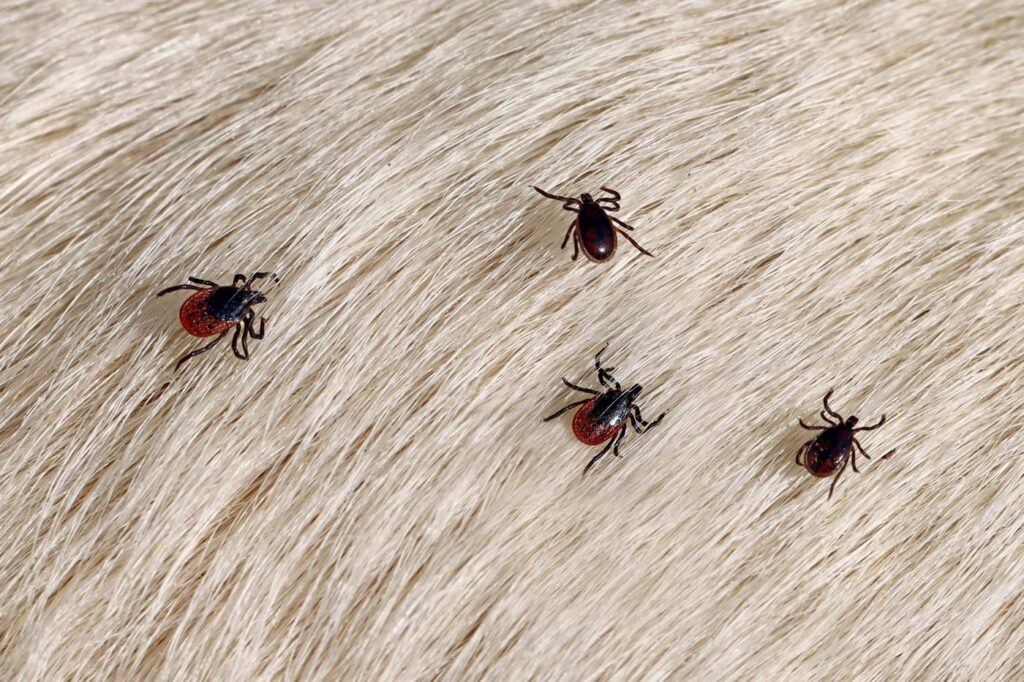
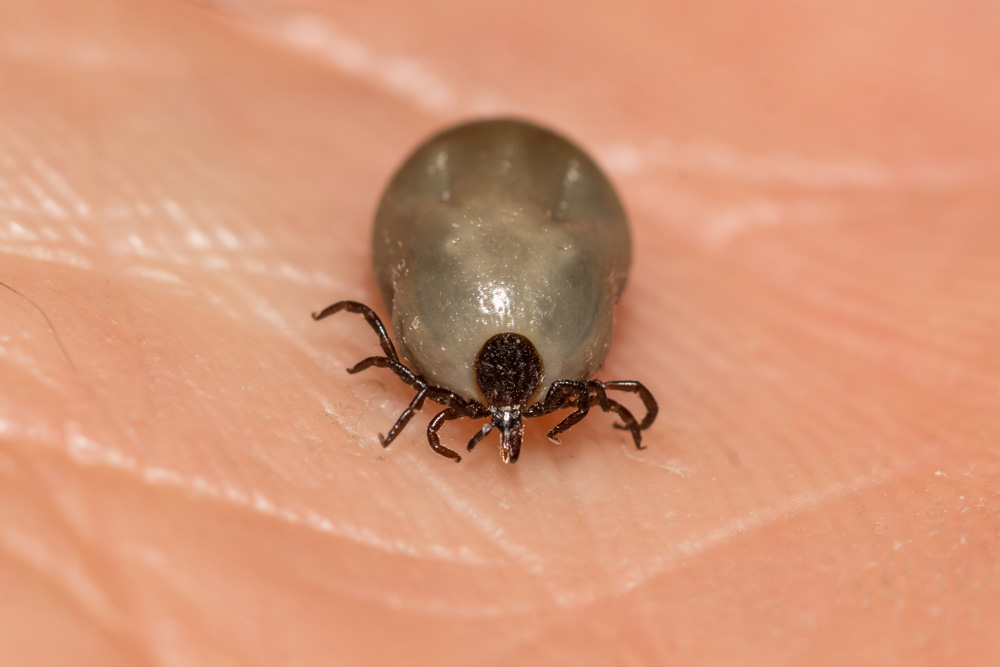
Primary carriers of Lyme disease, deer ticks thrive in wooded and grassy areas. They attach to humans and pets, making them one of the most dangerous tick species in Texas and beyond.
Size, Color: About 1/8 inch long; reddish-brown body with black legs and darker shield.
Identifying Characteristics: Small, flat, oval body with long mouthparts and no white markings.
Where does it nest/hide? Leaf litter, wooded edges, and tall grass where deer and rodents pass.
When does it typically reproduce? Spring through early summer; females lay eggs after overwintering.
What is it attracted to? Moist, shaded areas and host animals like deer, mice, and pets.
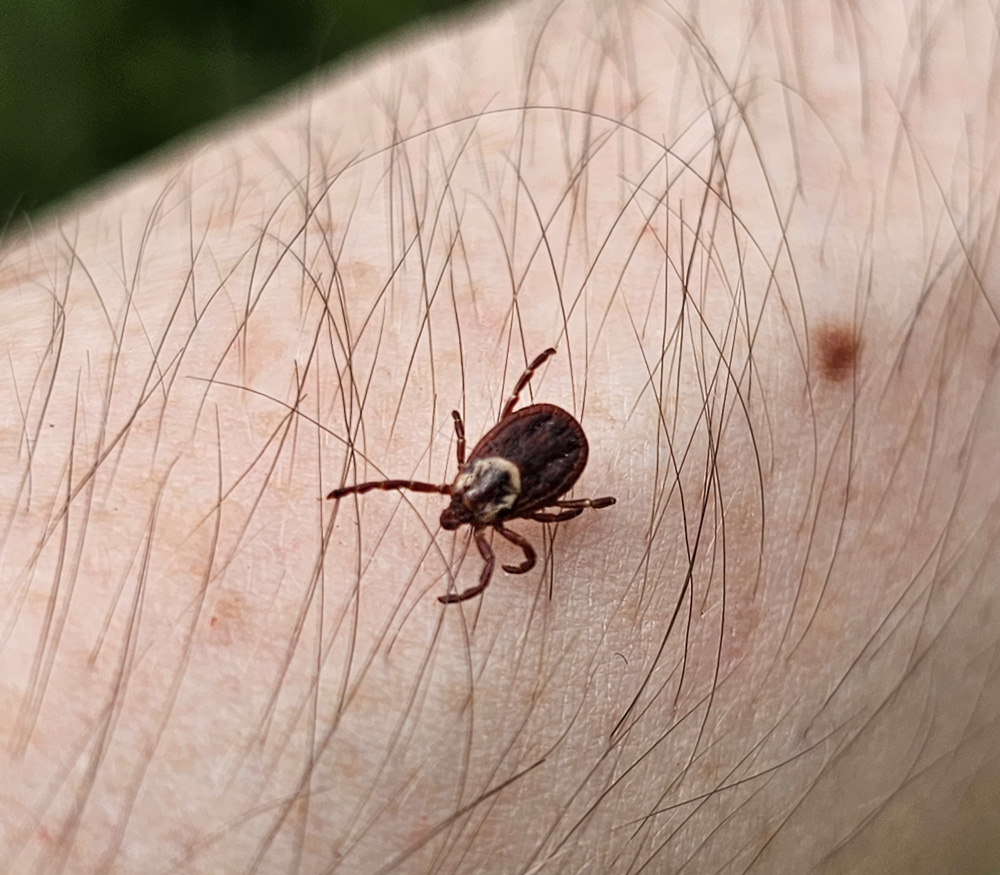
Named for the single white spot on their backs, Lone Star ticks are aggressive feeders and can transmit illnesses such as ehrlichiosis. They are common in brushy yards and fields.
Size, Color: About 1/4 inch long; reddish-brown with a single white spot (female).
Identifying Characteristics: Females have one white dot; males show faint pale streaks.
Where does it nest/hide? Brushy fields, wooded trails, and tall grass near animal paths.
When does it typically reproduce? Late spring to summer; females lay thousands of eggs after feeding.
What is it attracted to? Deer, pets, and humans; drawn to carbon dioxide and movement.
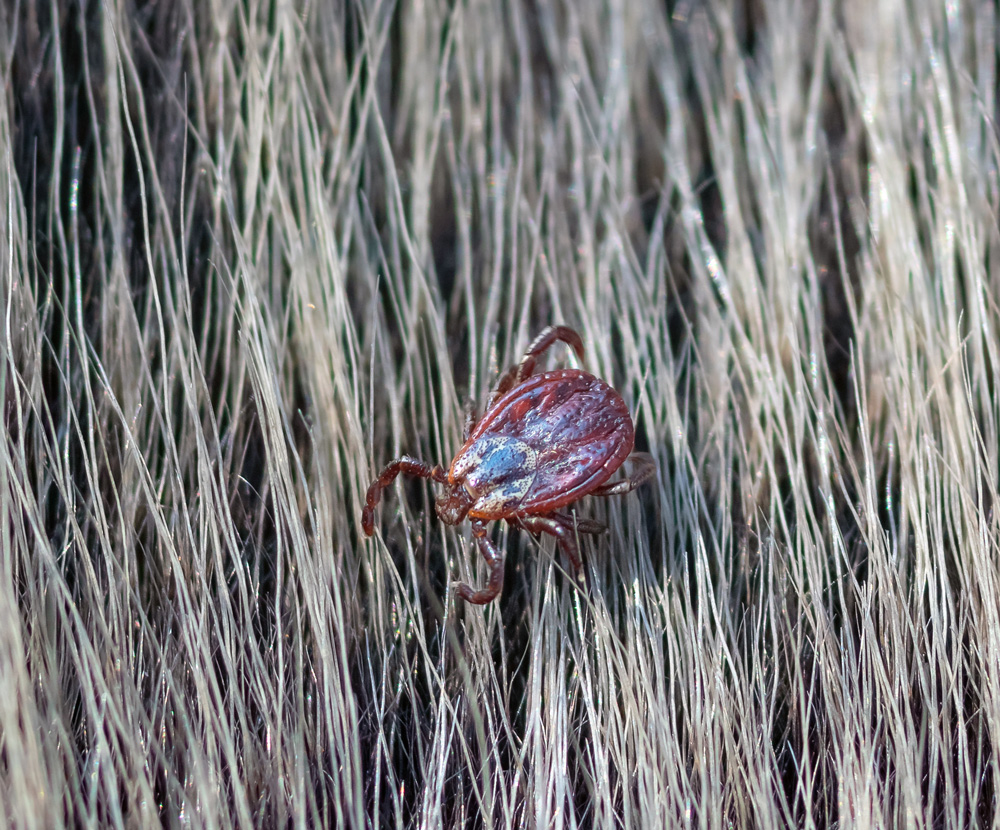
Often found on dogs, these ticks can also bite humans. They’re known carriers of Rocky Mountain spotted fever and are active in tall grasses and along property edges.
Size, Color: About 1/4 inch long; reddish-brown with silvery-white markings on the back.
Identifying Characteristics: Oval shape with patterned shield; larger than most ticks.
Where does it nest/hide? Open fields, trails, and grassy yards where pets roam.
When does it typically reproduce? Spring through early summer; adults lay eggs after feeding.
What is it attracted to? Dogs, humans, and wildlife moving through tall grass.
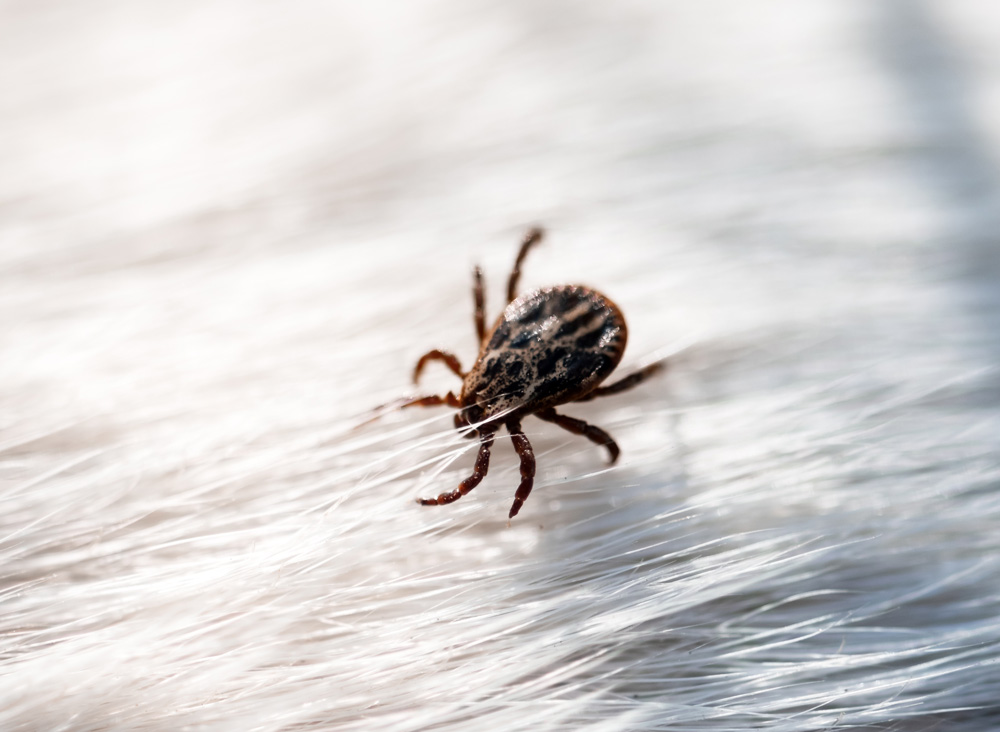
Unique in that they can complete their entire lifecycle indoors, brown dog ticks often infest kennels, pet bedding, and carpets, creating persistent indoor problems.
Size, Color: About 1/8 inch long; uniform reddish-brown without markings.
Identifying Characteristics: Slender body, solid brown color, long mouthparts.
Where does it nest/hide? Indoors—around pet bedding, carpets, baseboards, and kennels.
When does it typically reproduce? Year-round in warm indoor environments.
What is it attracted to? Dogs and warm indoor spaces where pets rest.
Prevent Infestations Before They Spread — Proactive Flea & Tick Programs for Every Property.
Inspect yards, shaded areas, and property edges for tick activity
Identify tick species and hotspots of infestation
Assess risk factors such as tall grass, brush, and pet traffic
Our Flea & Tick Control service is designed to break the entire life cycle — not just treat what you see.
This proven process eliminates existing infestations and prevents future outbreaks.
Our trained technicians apply pet-safe, environmentally responsible products that target every stage of the flea and tick life cycle — eggs, larvae, and adults.
Proactive follow-ups in 15 to 20 days from the initial service.
Recommendations:
Inside Your Home
Outside Your Property
For Your Pets
Lorem ipsum dolor sit amet, mea ei viderer probatus consequuntur, sonet vocibus lobortis has ad. Eos erant indoctum an, dictas invidunt est ex, et sea consulatu torquatos. Nostro aperiam petentium eu nam, mel debet urbanitas ad, idque complectitur eu quo. An sea autem dolore dolores.
Ticks remain active as long as temperatures stay above freezing. Many species latch onto hosts preparing for winter, and homeowners may see a surge of activity near pet areas.
Our comprehensive pest inspection and prevention program focuses on early detection and elimination of conditions that attract unwanted pests. Through ongoing monitoring and tailored maintenance, we help ensure a safe, pest-free environment for your facilities year-round.
A proactive rodent management program reduces costly damage, contamination, and emergency callouts often associated with reactive treatments. By addressing potential issues early, LONESTAR Pest Solutions helps protect both your facilities and your budget through consistent, preventive care.
Our hassle-free scheduling and routine visits allow your team to stay focused on daily operations while we handle pest prevention behind the scenes. With reliable service you can count on, LONESTAR Pest Solutions ensures your facilities remain protected—without interruption or added effort on your part.
From effective elimination to long-term prevention, we provide more than just products — we provide peace of mind. Our professional-grade solutions are designed to target pests quickly and efficiently, while our certified experts are here to guide you every step of the way. With personalized guidance and the assurance of high-quality standards, you’ll have the confidence to take back control of your environment.
Great customer service with Team Theresa at the front desk & Cameron, my technician. They are a joy to work with. Theresa consistently like clock work schedules my appointments quarterly & timely. Cameron has done an incredible job going above & beyond maintaining my grandson’s sandbox outside – ant free! It is a such a relief. Never mind his meticulously attention to detail inside my home is much appreciated. Both Theresa & Cameron are a valuable asset to Lone Star Pest. Call them!
— Susie Gold
Lonestar does our quarterly pest control and we had to call for re-spray of our kitchen due to these 100 plus degree temperature days. They sent Eddie over right away and he was so helpful telling me to pick up dog food every day, plug drains daily, use vinegar solution for drains, and make sure they always spray an area of the custom cabinets that has a gap between the cabinets and wall. He was the best! Really educated me and was so patient and even funny as I stared wide eyed over his knowledge of all things cockroaches.
— Carolyn Wafford
Have used Lonestar for years for normal treatments inside and outside, but just recently used them for mosquito control prior to an outdoor graduation pool party. EXCELLENT RESULTS AND PHENOMENAL SERVICE! We had them do a general area fogging and then leave-behind portable remote controlled area “mister” — we haven’t seen a mosquito in two weeks!
— John Seamon
We have used Richard’s team for years. Recently we learned our neighbor’s had termites. We contacted Lone Star to learn about our options. The solution provided was better than solutions our neighbors suggested. In fact, we learned of several pitfalls that our neighbors might encounter (beyond higher cost over the long term).
— Timothy Smith